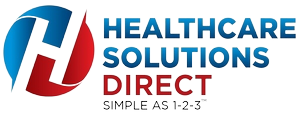Medicare Parts Explained
The 4 Parts of Medicare
Medicare Parts Explained
Medicare is a federal health insurance program. Original Medicare consists of Part A and B. Medicare is available to anyone age 65 or older, those that are younger with permanent disabilities and those with End Stage Renal Disease with permanent kidney failure requiring dialysis or transplant. It is important to understand how Medicare works and the different parts. Let us make sense of Medicare for you!
If you are like most people, your past health care coverage came from either an employer or an individual health plan. The complexities of enrolling in the federal health coverage can come as quite a shock.
Understanding the difference between Medicare parts and plans is seemingly impossible. However, explaining the parts of Medicare is our specialty.
Most new beneficiaries and some current ones need the parts explained in detail, which we have done here. Medicare has only four parts that you need to understand to become an expert.
Four Parts A, B, C & D
Medicare Part A covers inpatient hospitalization, skilled nursing facility, home health care, and hospice. There are no provider networks with Part A. You can see any healthcare provider that accepts Medicare.
Medicare Part B covers outpatient medical expenses when you are not admitted to the hospital. This includes things like primary care and specialist visits, preventative care, outpatient surgery and procedures, durable medical equipment, chemotherapy and even ambulance rides. There are no provider networks with Part B. You can see any healthcare provider that accepts Medicare.
Medicare Part C is often referred to as a Medicare Advantage plan. It is an alternative plan to Original Medicare Part A and B that is offered through private insurance companies that must provide the same or better coverage. Medicare Advantage Part C often are HMO or PPO plans and may offer additional benefits not offered by Original Medicare such as prescription, dental, vision, and hearing coverage.
Medicare Part D is prescription drug coverage that is offered either through a standalone prescription drug plan (PDP) or through a Medicare Advantage (MAPD).
Original Medicare Part A
Medicare Part A is referred to as hospital coverage and is generally offered at no additional cost to qualifying individuals who have at least forty calendar quarters or ten years of employment in any job in which Social Security taxes were paid for in the United States.
You are also eligible if you qualify for Railroad Retirement benefits as a federal employee after Dec. 31, 1982, or a state or local employee after Mar. 31, 1986.
If you do not qualify though Social Security or the Railroad Retirement Board, Part A could cost you over $400 per month.
Part A covers medically necessary inpatient hospital, skilled nursing facility, home health care and hospice. Part A is not full coverage as it has a reoccurring deductible and other out of pocket expenses.
Additionally, Part A will not cover private nursing or a private hospital room unless medically necessary. Part A will not cover long-term care often referred to as nursing home care.
Original Medicare Part B
Medicare Part B is referred to as medical coverage and is optional coverage that requires a premium to be paid monthly. The premium will be based on the previous two years of annual income.
Medicare Part B covers outpatient medical expenses when you are not admitted to the hospital. This includes things like primary care and specialist visits, preventative care, outpatient surgery and procedures, durable medical equipment, chemotherapy and even ambulance rides.
Medicare Part B is not full coverage. There is small $203 deductible for 2021 and other out of pocket expenses. Medicare covers 80% and the beneficiary is responsible for the other 20% of healthcare costs. The standard Medicare Part B monthly premium for 2021 is $148.50 and is usually deducted from the Social Security retirement check.
Once Medicare Part B is beginning, you can enroll in a Medicare Supplement (Medigap) policy to help cover the high out-of-pocket expenses of Original Medicare Part A and B or chose an alternative Medicare Advantage Part C plan.
Medicare Advantage Part C
Medicare Part C, or “Medicare Advantage,” is Medicare coverage offered by a private insurance company. Medicare Part C is sometimes considered an all-in-one Medicare plan.
Beneficiaries can sign up for Medicare Advantage Part C instead of Original Medicare Parts A and B. Medicare Advantage Part C plans must offer the same Part A and B benefits of Original Medicare, but many also have additional coverage such as dental, vision, hearing, and prescription coverage.
Medicare Advantage plans can be either an HMO, HMO-POS, PPO, PFFS, SNP (Special Needs Plan), or MSA (Medical Savings Account) and they operate much like employer or individual health insurance coverage.
It is possible to pay a monthly premium for this coverage, in addition to your Part B premium. Enrollment outside of your Initial Enrollment Period (IEP) is typically between October 15th through December 7th of each year known as the Open Enrollment Period (OEP).
Original Medicare Part D
Medicare Part D
Medicare provides drug coverage to everyone who is eligible for Medicare through what is referred to as Medicare Part D.
Medicare prescription drug coverage is an optional benefit that you can get through a private insurance company either as a standalone prescription drug plan (PDP) or through a Medicare Advantage (MAPD). You can only have one or the other.
Even if you do not take prescriptions now, you should consider joining a Medicare drug plan. Here is why you should get a Part D plan.
If you decide not to join a Medicare drug plan when you are first eligible, and you do not have other creditable prescription drug coverage or get Extra Help, you will likely pay a late enrollment penalty if you join a plan later. Generally, you will pay this penalty for as long as you have Medicare prescription drug coverage.
2 ways to get Medicare prescription drug coverage:
Medicare Prescription Drug Plan (PDP). These plans are sometimes called a standalone PDP. You must have Original Medicare Part A and/or B to join a Medicare Prescription Drug Plan (PDP).
Medicare Advantage Plans (MAPD). Many Medicare Advantage plans will include a prescription drug plan in their HMO or PPO plan. Those plans that include prescription drug coverage are referred to as MAPD.
Frequently Asked Questions
No. When someone is eligible for Medicare they will have the choice to get their health coverage through Original Medicare Part A and B, which is directly form the federal government, or from a Medicare Advantage Part, which is offered by private insurance companies similar to group or individual insurance plans.
No. Medicare is not free. Medicare Part A is typically free since most have paid into it through payroll taxes. There is a charge for Medicare Part B. The standard monthly premium for 2021 is $148.50 a month.
No. You must have Medicare Part A and B in order to enroll into the alternative Medicare Advantage Part C. Although there are $0 premium plans available, you will still be required to pay the standard monthly Part B premium of $148.50 in 2021.
Enrollment into Medicare Part A and B is done through Social Security. If you are drawing Social Security at least 4 months prior to your 65th birthday, it is automatic. If not, you will need to apply online. Give us a call and one of our client experience group specialist will help walk you right through the enrollment.

